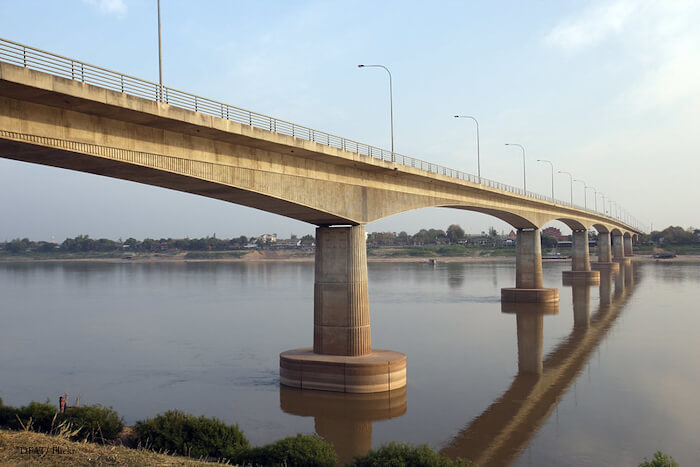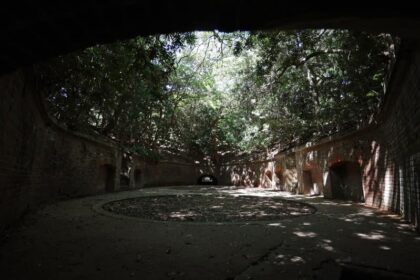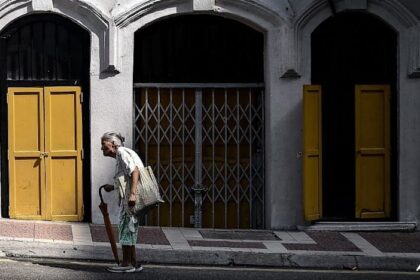Fifth Lao-Thai Friendship Bridge Set to Transform Regional Trade and Connectivity
The completion of the Fifth Lao-Thai Friendship Bridge marks a significant milestone in Southeast Asia’s infrastructure development, promising to reshape trade, investment, and tourism across the Greater Mekong Subregion. Connecting Bueng Kan province in northeastern Thailand with Borikhamxay province in Laos, the 1,350-metre bridge is expected to open to traffic by December 2025, coinciding with the 75th anniversary of diplomatic relations between the two countries.
- Fifth Lao-Thai Friendship Bridge Set to Transform Regional Trade and Connectivity
- How Will the Bridge Impact Regional Trade?
- Boosting Connectivity and Economic Cooperation
- Part of a Growing Network of Friendship Bridges
- Strategic Significance for the Greater Mekong Subregion
- Looking Ahead: Future Infrastructure and Regional Development
- In Summary
How Will the Bridge Impact Regional Trade?
Officials and experts anticipate that the new bridge will serve as a vital artery for cross-border trade and logistics, not only between Thailand and Laos but also extending to Vietnam and southern China. The bridge links Thai Highway 222 in Bueng Kan to Route 13 in Pakxan district, Borikhamxay, forming part of a broader economic corridor that stretches to Vietnamese deep-sea ports. This corridor is a key component of the East-West Economic Corridor, which connects Myanmar, Thailand, Laos, and Vietnam, facilitating smoother trade flows and export access to global markets.
According to Thailand’s Transport Minister Suriya Jungrungreangkit, the bridge is expected to expand cross-border trade between Thailand and Laos by at least 5% annually. Currently, border trade via Bueng Kan is valued at 28 billion baht per year, and the new infrastructure is projected to steadily increase this figure by improving logistics capacity and reducing transport costs.
Stephen Groff, Vice President of the Asian Development Bank, emphasized the bridge’s strategic importance:
“The bridge is the ‘missing link’ along the North-South Economic Corridor, which is the main land route for trade between Yunnan province in China and Thailand, as well as being a gateway for connectivity between China and ASEAN countries.”
With the bridge in place, the potential for this corridor to become a driver of regional trade, tourism, and investment can be fully realized.
Boosting Connectivity and Economic Cooperation
The Fifth Lao-Thai Friendship Bridge is more than just a physical structure; it is a symbol of deepening cooperation and shared prosperity in the region. The bridge will significantly cut travel time between Bueng Kan and Pakxan by up to three hours, making it the shortest road route from Thailand to Vietnam. This improvement is expected to benefit businesses engaged in trade and transport, as well as tourists and local communities.
Dr. Sonethanou Thammavong, Governor of Borikhamxay province, announced plans to develop the area at the Lao end of the bridge into a special economic zone. This zone will include a cargo and logistics hub, further enhancing the region’s role as a transportation connector for neighboring countries.
The bridge is also expected to start with 1,200 vehicles crossing daily, with projections rising to 3,000 vehicles within five years. This increase in traffic will not only boost trade but also foster people-to-people exchanges and cultural ties.
Part of a Growing Network of Friendship Bridges
The Fifth Lao-Thai Friendship Bridge joins four existing bridges that span the Mekong River, each playing a crucial role in improving regional transport connectivity:
- Nong Khai–Vientiane (First Friendship Bridge)
- Mukdahan–Savannakhet
- Nakhon Phanom–Thakhek
- Chiang Khong–Houayxay
These bridges have collectively handled over 5 million vehicles annually, underlining their importance in facilitating trade and movement across borders. The new bridge is expected to further strengthen this network, supporting ASEAN’s goals of economic integration and cooperation.
Strategic Significance for the Greater Mekong Subregion
The Greater Mekong Subregion (GMS), which includes Cambodia, Laos, Myanmar, Thailand, Vietnam, and parts of China, is bound together by the Mekong River and has a combined population larger than that of the United States. Infrastructure projects like the Fifth Lao-Thai Friendship Bridge are central to the GMS Economic Cooperation Program, which aims to promote sustainable development, reduce poverty, and enhance connectivity among member countries.
The bridge’s completion comes at a time when regional leaders are focusing on new investment frameworks for development projects over the next decade. By providing a direct transportation link over the Mekong River, the bridge is expected to reduce travel time, lower transportation costs, and improve access to markets, thereby spurring economic growth and regional integration.
Looking Ahead: Future Infrastructure and Regional Development
Following the success of the Fifth Friendship Bridge, Thailand and Laos are already planning a sixth bridge to link Ubon Ratchathani with Salavan province in Laos. This ongoing commitment to infrastructure development highlights the region’s determination to complete the transport network along the Greater Mekong Subregion Economic Corridors, supporting long-term growth and connectivity.
As the Fifth Lao-Thai Friendship Bridge nears completion, it stands as a testament to the power of regional cooperation and the shared vision of prosperity among Southeast Asian nations.
In Summary
- The Fifth Lao-Thai Friendship Bridge will open by December 2025, connecting Bueng Kan (Thailand) and Borikhamxay (Laos).
- The bridge is expected to boost cross-border trade by at least 5% annually and enhance connectivity to Vietnam and southern China.
- It forms a key part of the East-West Economic Corridor, facilitating smoother trade flows and export access to global markets.
- The bridge will reduce travel time, lower transport costs, and support the development of a special economic zone in Borikhamxay.
- It is part of a growing network of Mekong River crossings, strengthening regional integration and economic cooperation in the Greater Mekong Subregion.












